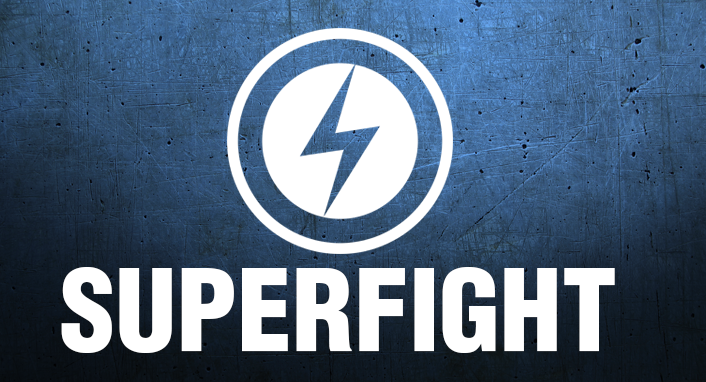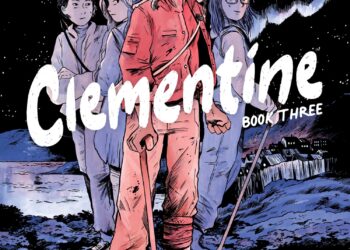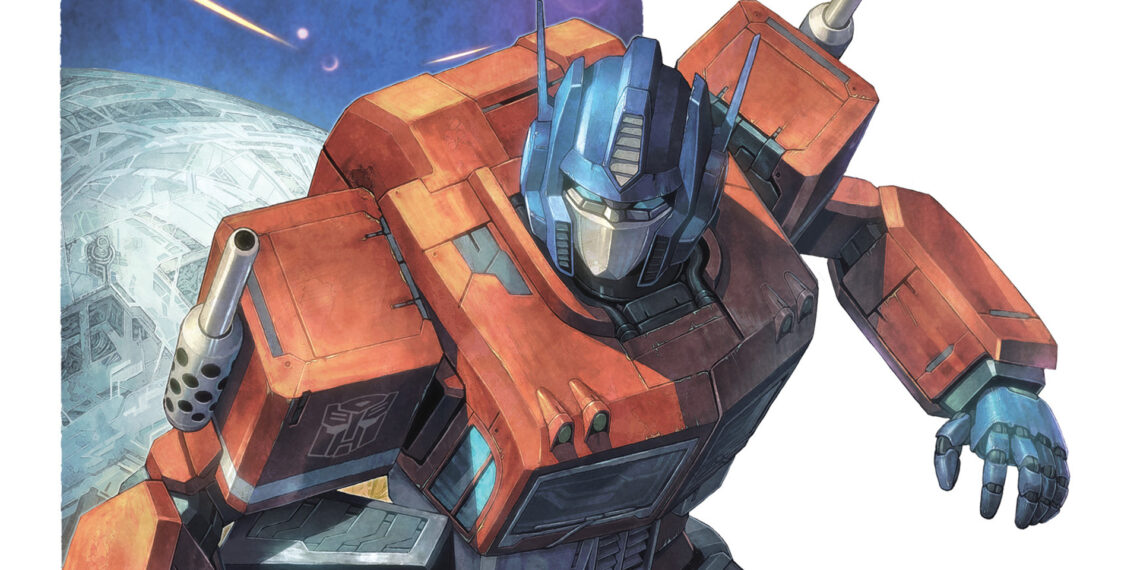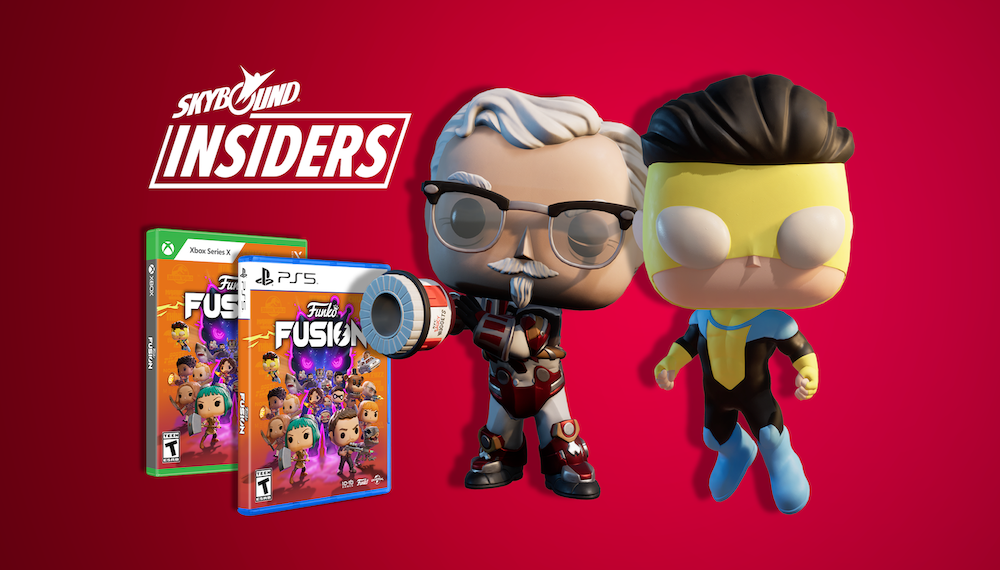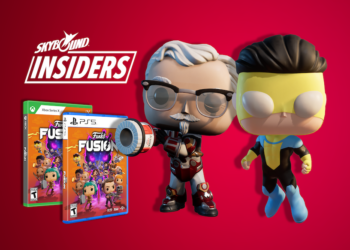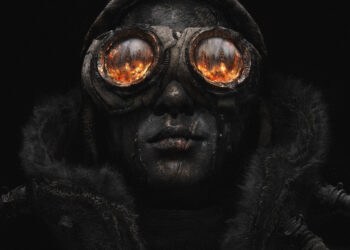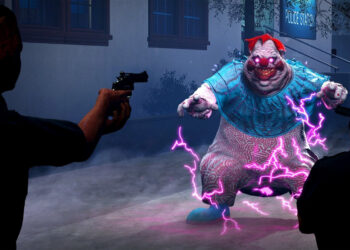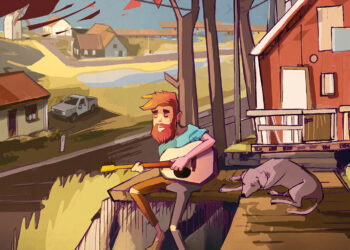Hey guys! Brian here. With Superfight pre-orders just about ready to fly out the door, and the first episode of our new web series SUPERFIGHT BY NIGHT out, we thought it would be a good time to sit down with creator Darin Ross and talk to him about all things Superfight! Here’s Jason Tabrys with the interview!
Jason Tabrys: How does one get into the card game making business?
Darin Ross: Wow. There are probably two answers to that. There’s the answer of how, traditionally, somebody should get into the card making business, depending on who you ask. Then there’s the answer of how total hacks like me can get into the business, which is through crowdsourcing like Kickstarter or IndieGoGo. We’re living in a world now where we get to post on the Internet that we have an idea for a thing and people can front-load the money for those things. It’s a much different answer than it would have been five years ago where I would have had to shop my idea to people with money or big companies and all that stuff and deal with all of the creative self-hate that can happen when you’re in those kinds of scenarios. Now that you’re just able to spitball things and have support happen for them at the same time, the answer is as simple as, “Post your idea on the Internet and see if people will help you make it.” That’s it. It’s really that easy now.
JT: Where did the idea for Superfight come from?
DR: For a while I had been trying to work out a different kind of card game. So the idea for Superfight really came out of the frustrations I was experiencing with that card game, which was more complicated. Superfight, at its core, is a very simple concept. At one point, it was on a Wednesday, I was sitting on my couch thinking, “Man, I just want things to fight things and have it be funny.”
In that minute that I thought that, Superfight was born, with me thinking, “Wait, I can just make a game of things just fighting things and it’s funny.” That’s it. It was almost like the byproduct or the waste of a more complicated game that just became this. I think a lot of things are better in their purest form. That’s certainly what happened with Superfight. All the frustrating parts of the other game got boiled away. Superfight is what came out of that.
JT: Just for someone who is reading this who isn’t familiar with the game but they’ve heard of something like Cards Against Humanity, can you just lay out how this game distinguishes itself from the competition, how this game is unique?
DR: Sure. This game used to be more modeled on judge‑based games like Cards Against Humanity or Apples to Apples, where one person is putting a thing on the table and the rest of the people are trying to do something that that person will give them a point for, effectively. But over the course of the game’s life, became not at all like the other games.
The rules aren’t judge‑based with one judge, like they are in the other games. Fights aren’t anonymous. The other games have anonymous judging. In this one, I wanted it to be all about your ability to argue why your kindergarten class that’s wearing jet packs and armed with samurai swords would beat a steel tyrannosaurus that shoots lasers from its eyes. It should be all about how good of an argument you make for that kindergarten class to win the fight rather than someone arbitrarily deciding one or the other.
Since the judging in Superfight happens by the whole table, two people are fighting at a time and the rest of the table is deciding the winner of the fight based on those arguments, it’s really become a game that is not at all like the other games in terms of mechanics or in terms of experience playing it, what that is going to be like, how much shouting happens. Because it’s not anonymous and because you’re arguing your case, it’s really, really loud and I like that about the game a lot.
JT: You’ve got “suggest a card” on the website. What are some of the weirdest suggestions that you’ve gotten?
DR: Oh, man. This is my favorite topic. I certainly don’t want to sound like I’m taking a tone where I’m making fun of any of these. But some of the cards were so… Ok. One of the best examples of a card was an attribute card somebody suggested. Let’s say you’ve got a shark and the attribute card that the person suggested, read, and I quote, “Uses taxes to take all the money.” End quote.
That got me to laugh in a game where there was, at one point, an attribute that just said, “is wearing the most beautiful hat.” That was your totally useless, throwaway attribute. Even though the game already contains cards like that, I still marveled at how totally weird that suggestion was. Most of the card suggestions tend to be adult‑themed. They would belong in our red deck.
Because for one reason or another, people really like to add sexual things to non‑sexual things. So a lot of suggestions are like that. But you get some real gems in there, like using taxes to take all the money will always be near and dear to me.
JT: Not to dwell on the whole Cards Against Humanity thing, but is there a possibility in the future you might consider doing something where it’s like a starter pack that’s for free to download, or offer something where people can just download it themselves and print it out themselves? Or are you comfortable with the model you have?
DR: We talked about that a lot, because when it was just me doing the Kickstarter, not only did I consider that, but I made a free print-and-play version. It never really stuck with me. It’s going to sound immediately like it’s a money‑grabbing issue, but really it is more of a qualitative issue. I understand that people who play print-and-plays are happy with it being flimsy paper and all that.
But to me, not to make it sound like more than it is, but it would almost be like Apple offering a free version of their Macs but made out of cardboard. You want the experience with the game to be as good as it can be. My background is one of… I like to think that I’m an artist. That carries into a lot of the stuff that I do, and especially with Superfight, I believe even though it’s just a card game, there has to be this kind of emotional connection to it where you like having it in your hands, you like playing it, you like how the cards shuffle, you like how the box looks.
You lose a lot of that with a print-and-play Yes, you expose people to the game and the concept of the game, but their experience with that game is, by default, design‑wise, not as good… just because of how it’s being played. Once I started to notice that happening, I killed the print-and-play.
People still ask for it and I feel bad, but I don’t regret doing that. I think the game should be what it is and exist in its one form, and I can concentrate on making that form as good as it can be rather than managing multiple versions of it.
JT: You talk about exposing people to the game. Just in general, when I was first looking at this, I’m not somebody who plays tabletop games. I’d like to be, but I’m not right now. Getting into this, do you think it’s possible that this could be almost like a gateway drug for people, with other battle card games?
DR: Yeah, very much so. There is this weird thing happening in our culture, where really complicated tabletop games are becoming very popular. Even Dungeons and Dragons is dealing with a resurgence of popularity. So complicated things are becoming things that people are buying more and more of. Now there is this middle‑ground of people that you can catch getting into sitting down and playing physical things that aren’t Pictionary and also aren’t Call of Duty.
There is this area of people who want to do things. This is, I believe, one of the most perfect games for doing that. Not to just sell my own thing, but it taps into something we can all relate to. If you make a game that’s about buying and selling oil fields, not everybody is going to care about it or even has ever thought about buying and selling oil fields, but everybody has thought about things fighting other things and has an opinion about a thing fighting another thing.
I definitely wanted to design it to be that kind of gateway drug at a time when people are getting less and less enjoyment out of digital things and out of doing things virtually or whatever else. I wanted to make this tangible thing that could act as a shoehorn into getting people into more of these kinds of things. From what I can tell, that’s exactly what’s happening.
JT: What can you tell me about the expansion packs that are now available and also the new set of rules that you’ve come up with? How is the game evolving?
DR: The game has evolved, first and foremost, from that original rule set. In the original rule set, there was a judge who would put down a character for everybody at the table to fight. Everybody at the table would try to beat that character and then the judge would choose who did the best job. Those were the initial rules. Again, very much like Cards Against Humanity, in terms of one person deciding the fate across multiple people.
But even though those rules were good, they were lacking something. If you were playing with a big enough party, there would be too many cards on the table. And then I added a component where you’re using some of your weaker cards, like, “Can’t see,” or, “Has no legs.” You’re playing them on the person next to you to try to hurt theirs before they go to fight the judge.
So a lot of good rules came out of that rule set. They’re still in the current rules, as alternate rules. But eventually, it got to the point where I was just thinking, it’s so much more fun and playable to concentrate on one fight between two characters. And then it was one of those moments where I just thought, “Then that’s exactly what we’ll have the rules do. Two people at a time will fight and the rest of the table will decide.”
After having play‑tested that in the community, through alternate rules, and then became the primary rules because people liked them so much. The expansion packs were all part of the Kickstarter that I did. I wanted to make the game modular in a way that people who liked certain kinds of things could have that in their game without exposing the rest of the players or potential players of the game to those things.
The most glaring or the best example of that are the R‑rated cards in the red deck. There are plenty of people who love adult‑themed humor that would not at all like that in the core deck. Especially, the obvious one would be children. But all sorts of people just don’t think that kind of stuff’s funny, so having it in a separate deck let people make the game that way if they so chose. So once I decided to do that for R‑rated stuff, I realized very quickly that, “Oh, I could do that for content like the orange deck,” which is geek culture stuff.
We’ll have comic book references, video game references, stuff that a lot of people might not necessarily recognize unless they intentionally bought that stuff in the orange deck. And then I did the same thing for family friendly stuff. So kids’ stuff, where you will get Peter Pan. That’s the green deck will have mostly kids’ stuff. Then through the evolution of having that stuff that once I got into this, I brought up that they were part of the Kickstarter because that led to more expansions being made as backer rewards as we reached certain levels of the funding.
Next up came locations. I thought it would be fun to have cards that said, “Instead of just fighting out in the open, now you are fighting on an infinite ice rink or you’re fighting on the moon.” Or something like that.
Again, have it be something where people chose whether or not to buy that deck and could do that to their game if they wanted to. And if they didn’t want to, the core game stayed the core game and wasn’t necessarily in. So the red deck would make the game more adult‑oriented, whereas decks like the blue deck and purple deck make the game more complicated and can start to shake the tree of more casual gamers if they just want to only think about one thing and not locations.
Because the purple deck adds scenarios where now, all of a sudden, all of the fighters, the two fighters are chained together with a 30 foot chain or there is no gravity. The purple cards affect the whole fight. The goal of all of these is to make something funny happen, because it’s a comedy‑based game. It’s a humor‑based game. We want these cards to make something happen. Then everybody thinks, “That’s funny, that Barack Obama is trying to fight without gravity because the chimpanzee, his fighting has throwing stars and whatever else.”
Those are the main expansions. There was another one called the Hero Machine that we are in the process of bringing back. It went out of print because there were some printing problems with the colors of grey that were on there—I don’t want to make the shades of grey joke, I’m trying really hard to keep away from either of us making that joke—but there was a problem with the shades of grey on the cards. So I shelved it until I could get back to it. Just recently, we were talking about, what color adjustments can we make? Or design adjustments can we make to bring that deck back? Because it’s a good one. It’s one that creates random characters. You have three decks that split into things that will make like, “Wooden grandma tag team.”
You draw three random cards and those three words make your character. It’s a lot of fun. People like it a lot.
JT: Now, lastly, and this kind of plays off of that. First of all, how did the Skybound partnership develop and also is there a possibility that we might see expansion packs that are centered around Skybound properties and those familiar characters?
DR: The answer to the second question is in some ways the answer to the first question, because my relationship with them developed because I approached them asking that very thing. I talked to their head of business development, Shawn, in a parking lot. The first time I ever met anybody from Skybound. I said, “Hey, what do you think about making a Walking Dead expansion pack for Superfight? So people can play with Rick Grimes fighting a three‑story octopus?”
I think fans of the show would love that or fans of the comic would love that. He agreed. I went up there to play a test round with them. We had a great time. I got a phone call that night, saying… I didn’t know enough about Skybound to have predicted they would say this to me, but they said that not only do they want to work out making that kind of expansion pack, but they wanted to partner with me to help me grow the game while keeping me at the forefront of being the person who made the game and in place as the artist of the game much like what they do with their comic books.
A lot of time has passed and I know what Skybound is all about and it makes perfect sense that that is the approach that they took to this game. So I got really lucky in that regard, because I got a lot of offers from people saying, “Hey, we like that game. We want to take it from you for this much money.” And I would have no more involvement.
That’s just not what Skybound does. It’s a really good relationship. As a result of that partnership, yeah, for sure. We’re definitely working out how to get their characters and their stuff that’s already well‑loved by a lot of people, into this game. I think it’s going to do great for both of those things.
JT: All right. Excellent.
Thanks, Jason! Thanks, Darin!
Jason Tabrys writes for Uproxx, CBR, Screen Rant, Den of Geek, and more! He’s on Twitter at @JTabrys! Go yell at him!
Darin Ross created Superfight, has great hair, and is busy thinking of more sick, twisted card combos. He’s on Twitter at @LuckyShirt! Go ask him about burritos!
NOW WATCH THE FIRST EPISODE OF SUPERFIGHT BY NIGHT!!!!




